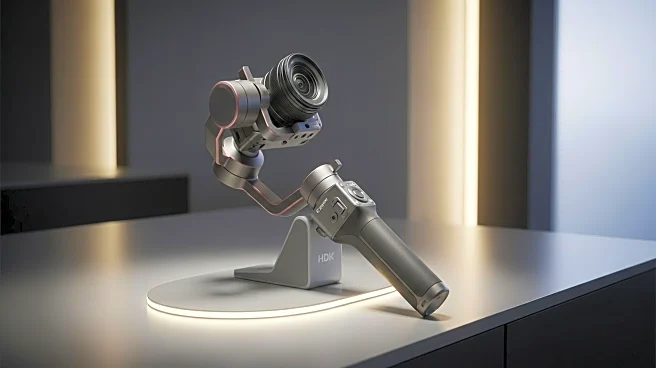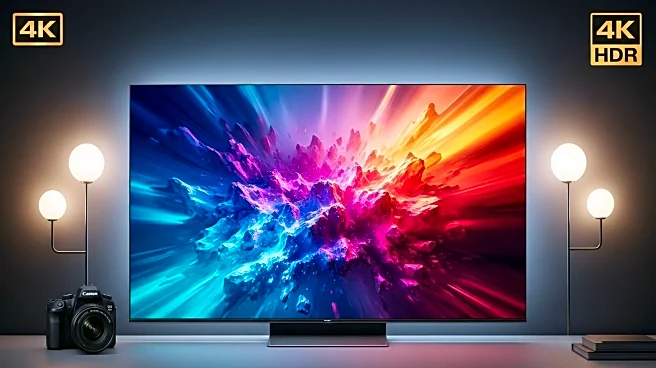What's Happening?
The DJI RS 3 Mini 3-axis gimbal stabilizer for cameras is currently available at its lowest price ever, following Amazon's Prime Big Deals Days. Originally priced at $237, the gimbal is now offered at $189, a 20% discount. Designed for professional-grade use, the stabilizer supports DSLR cameras from brands like Canon, Sony, Panasonic, Nikon, and Fujifilm. It features high-torque motors, a pro-level RS stabilization algorithm, and supports native vertical shooting, making it ideal for social media content creation. The gimbal includes Bluetooth shutter control and offers a 10-hour battery life, with a quick recharge time of 2.5 hours.
Why It's Important?
The significant price reduction of the DJI RS 3 Mini gimbal stabilizer makes professional-grade camera equipment more accessible to photographers and videographers. This could lead to increased adoption of high-quality stabilization technology, enhancing the quality of visual content produced by both amateur and professional creators. The gimbal's compatibility with various camera models and its advanced features may also drive innovation in content creation, particularly for social media platforms where vertical shooting is prevalent.
What's Next?
As the DJI RS 3 Mini gimbal stabilizer becomes more affordable, it is likely to see increased usage among content creators looking to improve their video production quality. This trend may encourage other manufacturers to offer competitive pricing on similar products, potentially leading to a broader range of affordable stabilization solutions in the market. Additionally, the integration of advanced features like Bluetooth shutter control may inspire further technological advancements in camera accessories.
Beyond the Headlines
The availability of affordable professional-grade equipment like the DJI RS 3 Mini gimbal stabilizer highlights the democratization of technology, allowing more individuals to engage in high-quality content creation. This shift could influence cultural trends, as more diverse voices and perspectives are shared through visual media. It also raises questions about the sustainability of production practices and the environmental impact of increased consumer electronics usage.











